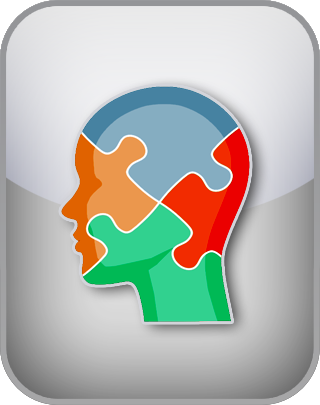Emotional Intelligence Discrepancy Test
The pioneering Emotional Intelligence Discrepancy Test represents an experiential measure designed to capture the intricate interplay between self-perceived emotional aptitude and actual emotional competence exhibited in real life. By synthesizing self-evaluation and empirical experience, this test delivers a personal composite result reflecting congruency vs. discord in cognitive-affective self-awareness.
Question 1 of 30
I believe I can connect with people on an emotional level and make them feel understood.
| Disagree | Agree |
NEXT
The Emotional Intelligence Discrepancy Test was developed by IDRlabs. It allows for the following results:
High EQ and Low Self-report Discord: Denotes a unique convergence wherein self-perceived emotional aptitude harmoniously aligns with observed emotional competence. This quadrant signifies a state of congruence, where an individual's introspective evaluation of their emotional intelligence accurately corresponds with their demonstrated emotional competence in interpersonal interactions. Individuals situated in this quadrant exhibit a remarkable harmony between their self-perceived understanding of emotions and their ability to effectively navigate emotional dynamics in practical social scenarios. They possess a high degree of self-awareness, recognizing their emotional strengths and limitations while adeptly translating this awareness into empathetic and attuned responses to others' emotional needs. This quadrant refers to individuals who not only possess a deep understanding of their own emotional states but also excel in deciphering and appropriately responding to the emotions of those they interact with. They effortlessly bridge the gap between their internal emotional landscape and their external behavioral manifestations, fostering positive and harmonious relationships. In essence, this quadrant represents a state of emotional intelligence excellence, where self-perception aligns seamlessly with behavioral reception, resulting in enhanced interpersonal effectiveness and enriched connections with others. It serves as an aspirational benchmark for those seeking to cultivate a comprehensive and congruent emotional intelligence profile.
Low EQ and High Self-report Discord: Denotes a unique domain that refers to the presence of cognitive-affective discord, particularly characterized by the phenomenon of emotional intelligence self-deceit. This quadrant encapsulates situations where individuals exhibit an overestimation of their emotional intelligence capabilities while their actual emotional competence falls short of their self-perceived prowess. Within this quadrant, individuals often perceive themselves as highly emotionally intelligent, possessing a deep understanding of their own emotions and those of others. However, their external interactions and behavioral manifestations belie this self-evaluation. They may inadvertently misread social cues, struggle to regulate their emotions effectively, or encounter challenges in empathizing with others. These discrepancies between their self-assessment and real-life experiences result in a state of cognitive-affective discord. Individuals situated in this quadrant may unwittingly engage in behaviors that impact their relationships and overall emotional well-being, necessitating interventions aimed at aligning their self-perceived emotional intelligence with their observed emotional competence. For those with this configuration, instruments such as this one serve as crucial loci for identifying and addressing such disparities in emotional intelligence, fostering personal growth, and improving interpersonal dynamics.
High EQ and High Self-report Discord: Denotes a unique realm where individuals exhibit what can be referred to as "EQ-underestimation discord." Within this quadrant, there exists a significant disparity between one's self-perceived emotional intelligence (EQ) and the observable reality of their emotional competence. Individuals placed in this quadrant tend to underestimate their emotional abilities, viewing themselves as less emotionally competent than their behaviors and interactions suggest. This discrepancy may stem from factors such as low self-esteem, self-doubt, or a lack of self-awareness regarding their emotional aptitude. Individuals in this quadrant may experience challenges in accurately assessing their emotional skills, resulting in missed opportunities for personal growth and improved interpersonal relationships. Their modest self-evaluation may hinder them from fully recognizing and harnessing their emotional strengths. Addressing the discord in this quadrant involves fostering self-confidence, enhancing self-awareness, and aligning one's self-perception more closely with their actual emotional competence. Instruments like this one offer a valuable framework for identifying these discrepancies and guiding individuals toward a more balanced understanding of their emotional intelligence.
Low EQ and Low Self-report Discord: Denotes a distinctive configuration where an individual's self-perceived emotional intelligence aligns with their observed, real-life experiences of having low emotional abilities. This quadrant refers to a scenario where one accurately gauges their emotional limitations, and these limitations are indeed reflected in their day-to-day interactions and relationships. Individuals placed in this quadrant exhibit a rare congruence between their self-assessment of having limited emotional competence and their actual acumen. This congruence may result from a high level of self-awareness and a realistic appraisal of their emotional strengths and weaknesses. In this quadrant, individuals are likely to engage cautiously in emotional situations, recognizing their own constraints and opting for a measured approach. While they may not possess advanced emotional skills, their self-awareness empowers them to navigate social interactions with a grounded understanding of their emotional limitations. This quadrant thus serves as a valuable point of reference, showcasing the importance of self-awareness and how it can align with actual experiences in a way that promotes authenticity and adaptability in social and emotional contexts.
As the publishers of this free test, which allows you to screen your actual and self-reported EQ, we have strived to make the test as reliable and valid as possible by subjecting this test to statistical controls and validation. However, free online quizzes such as the present test do not provide professional assessments or recommendations of any kind; the test is provided entirely “as-is.” For more information about any of our online tests and quizzes, please consult our Terms of Service.

